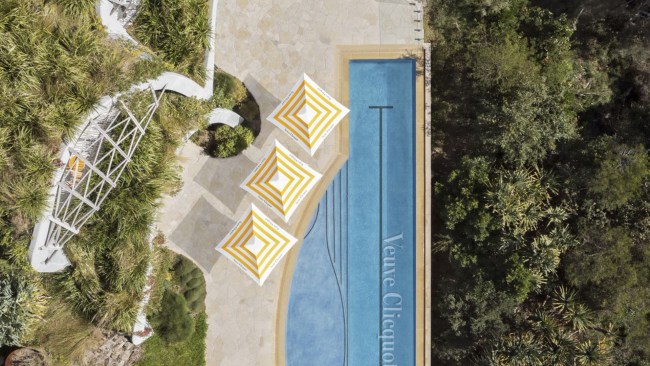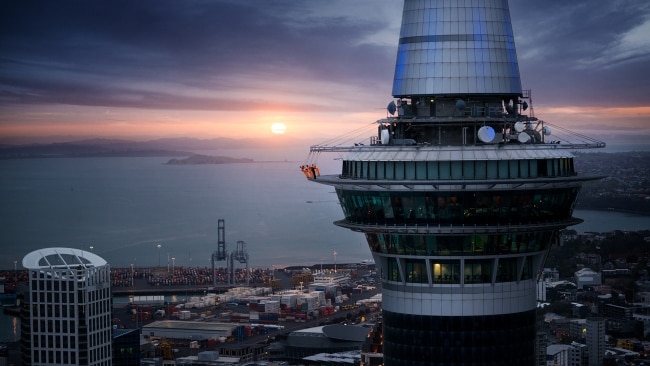The Ritz Paris is reopening after a €200 million refurbishment
THE celebrated hotel is a byword for style, and has been home to the rich, royal and famous.

AT the end of the day, a multi-million-dollar, 3½-year renovation of one of the world’s most famous hotels — The Ritz Paris — all comes down to plumbing.
When the management of the hotel on Paris’s Place Vendome started researching what its regular guests wanted from a refurbished Ritz, showers featured prominently. Men, according to the hotel’s general manager, Christian Boyens, were most concerned about water pressure. Women, on the other hand, wanted handheld showers so they could avoid getting their hair wet. “Women also wanted bathrooms to have two separate sinks as apparently they would prefer not to share one … I didn’t realise this was an issue,” says Boyens.
Bathrooms in general were a major concern for the Ritz’s regulars. When the hotel reopens every room will have a bathroom with a separate shower and bath. The showers will have three shower heads, the bathroom floors will be heated, they will all have two separate sinks and approximately 60 per cent of bathrooms will have daylight. There is, however, a relic of the old bathrooms that will not be changing: the peach-coloured towels which are a signature of the Ritz Paris. “[Founder] Cesar Ritz believed that peach coloured towels were the most flattering colour against the face in the morning with the daylight coming in through the windows. He thought the reflection from the peach towels was much prettier than if it would be from a harsh white one,” says Boyens.
“It’s not for us to change this idea,” says Boyens. “The Ritz will stay The Ritz. You won’t find any brushed aluminium or frosted glass in the hotel when it reopens. But what you will find is that the beautiful antiques that we have will be carefully restored. The chandeliers and lamps and other fittings will all be refurbished. On the surface it will look the same, but behind the walls you’ll have a 2015 hotel with the latest airconditioning system, with great water pressure, with a new elevator system. The hotel will also be more environmentally sustainable. We will have all the latest technology, but we won’t rub it in your face. We wanted that if people look for it, it’s there.
“A lot of effort is going into the details and to address little things like fire alarms that are integrated into the design of the room, and airconditioning, which is integrated into the ceiling mouldings. As I said, The Ritz stays The Ritz.”
The Ritz Paris closed on July 31, 2012, for what was then expected to be a two-year refurbishment that is reported to be costing €200 million. According to Boyens the hotel will open in the second half of this year, with the reservations system for the new look hotel launching in June. As with any renovation of an old building, unforeseen problems have delayed the completion of the project. “It’s an old building, we had structural issues, we had waterproofing issues in the basement, but now we have our fixed date.” Part of the problem has been that The Ritz is not just one building but a collection of four, acquired over the years, that all connect. Before the renovation started the hotel acquired another adjacent building which also had to be integrated into the structure. Despite the new addition, when the renovation project is complete the number of guest rooms will have shrunk from 159 to 143 to allow for better guest amenities.
Half of the rooms at the new Ritz Paris will be suites and the smaller guests rooms will be, Boyens says, at least 40sq m in area. The hotel’s garden courtyard will acquire a retractable roof so that it can be used all year round and the floor of the courtyard will be heated by recycling energy from the hotel’s kitchen and laundry. The spa and fitness centre will be expanded as will the Escoffier cooking school. The design of hotel is being overseen by Thierry Despont whose hotel design credits include the Carlyle in New York, Claridge’s in London and the Divan Hotel in Istanbul. According to Boyens the design of the rooms and public areas will, in general, be a bit lighter with more daylight brought into the hotel. The iconic Ritz blue in the lobby, however, will remain.
Boyens says the refurbishment of the hotel was an opportunity to think about the guests’ entire experience, starting when they land in the city. “Paris taxis are sometimes good and sometimes less than good,” says Boyens. “So for us that gives us an opportunity to think about how we can improve on that experience. We want to offer our guests a Ritz experience from the moment they arrive at the airport. We have a couple of things planned but we are keeping that a surprise.” For guests who prefer a discreet arrival at the hotel a new tunnel has been constructed to connect the Place Vendome carpark to the hotel, something that will no doubt please the hotel’s many visiting celebrities. “We have looked at everything we do and everything that is good about the hotel and asked how can we make it better,’ says Boyens.
The decision to undertake such a major renovation was no doubt due in part to the burst of new entrants into the Paris luxury hotel market. In 2010 Shangri-La opened its first European hotel in a historic building on Avenue d’Iéna and the Royal Monceau Raffles Paris also reopened that year after an extensive renovation on avenue Hoche. In 2011 Mandarin Oriental opened on Rue Saint Honoré, and last year The Peninsula opened its first European outpost — again in a historic building — on Avenue Kléber. At the same time Le Bristol underwent a refurbishment program and the Hotel de Crillon closed for a major overhaul. The new Asia-based entrants into the Paris hotel market not only created more competition for existing hotels by increasing the number of rooms available — they also raised the bar in terms of amenity and service and some of the more established hotels were suddenly found wanting. Another motivation for the refurbishment may be that when the French Tourism Ministry in 2010 decided to bestow a “Palace” status on select five-star hotels as an official recognition of the finest in French hospitality, The Ritz wasn’t on the list
It was almost certainly also because the hotel hadn’t been refurbished since the mid-1980s and it desperately needed modernisation. “Our owner wants to have a great hotel and it is true that we needed to make improvements,” says Boyens. “We actually planned this renovation from 2007 onwards but I think you can’t deny that [with new entrants into the market] everybody steps up their game. You can’t just sit back and say, we have a nice view, or we have a great chef or something like that. For us it was not the deciding factor, but you can’t ignore that in the last five years the room inventory in Paris has doubled and that’s an unusual situation. We are independent and family-owned and when we planned this renovation we thought, what do we stand for?”
The Ritz Paris was founded in 1898 by Cesar Ritz in collaboration with the chef Auguste Escoffier (before they opened in Paris they were manager and chef respectively of the Savoy Hotel in London) and from the time of its opening it was the standard bearer for luxury and the best service. It is thought to have been the first hotel in Europe to provide an en-suite bathroom with every guest room, the first to put a telephone in every room and the first with electricity.
(Oscar Wilde, however, was not terribly thrilled with the innovations and wrote that not only were the elevators too fast but that the light was “harsh and ugly … enough to ruin your eyes, and not a candle or lamp for bedside reading. And who wants an immovable washing basin in one’s room? I do not. Hide the thing. I prefer to ring for water when I need it.”)
The Ritz Paris quickly became the stomping ground for the world’s rich, royal and famous. Its rollcall of legendary guests is unparalleled, but its two most famous are possibly Coco Chanel — who lived at the hotel from 1934 until her death in 1971 and after whom a suite is named — and before her Marcel Proust, who wrote at his home in Paris but “went to the Ritz to live”. In 1940, during the Nazi occupation of France, the Luftwaffe set up their headquarters at the Ritz and chief Hermann Göring took up residence in one of the hotel’s suites.
Cesar Ritz died in 1918 and Escoffier in 1935 and the hotel was then run by Ritz’s widow Marie-Louise and son Charles. After Charles’s death in 1976 the hotel started to decline and was eventually purchased by its current owner Mohamed al-Fayed. What he bought was not just a hotel, but a piece of history and a piece of Paris. The hotel is used by locals as much as visitors. As a gesture of thanks to the city — and, no doubt, to the hotel’s storied neighbours, which include nearly every major jeweller and watchmaker in Paris — the hotel is contributing to the restoration of the famous Vendome Column which has not been cleaned or spruced up since 1873.
If regular Ritz guests return and think not much has changed, Boyens will consider it a job well done. “I keep saying The Ritz will stay The Ritz and it’s true,” he says. “When you come here you will feel at home. It’s no longer called the Hotel Ritz but The Ritz Paris, so it should be more of a private mansion than a commercialised hotel. It will be the most modern hotel but it won’t be in your face. People keep asking if we will have touchscreen controls in the rooms, and we won’t. It’s just not us.”
The Ritz Paris is a member of The Leading Hotels of the World. lhw.com; ritzparis.com



